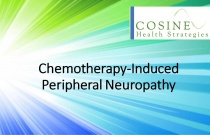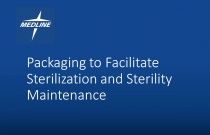Out-of-Control Order Sets? Get Control
Ray Keller
1.00 Hours
Hospitals continue to struggle with integration of evidence-based order sets into electronic health record (EHR) systems and with maintaining the evidence-based clinical content once they are deployed into the clinical workflow. Faced with outdated order sets and a governance process that risked being non-compliant with Joint C....
Patient identification at Leeds Teaching Hospitals NHS Trust, UK
Mr David Berridge
Leeds Teaching Hospitals NHS Trust is one of the NHS demonstrator sites for the national Scan4Safety programme, in which hospitals are supported on implementing the GS1 standards. This programme run for two years and yielded great results in Leeds hospital. David Berridge, Deputy Chief Medical Officer and Medical Director Operat....
Chronic Kidney Disease - Online Learning Package
Debbie Fortnum, Kidney Health Australia
Overview of all aspects of chronic kidney disease from stages 1-5 including detection and management
Anaemia - Controlling the Impact - Podcast
Jane York
Summary of all aspects of renal anaemia detection and management
Autosomal Dominant Polycystic Kidney Disease - Webinar
Dr. Vincent Lee
Everything you need to know about Autosomal Dominant Polycystic Kidney Disease
Changing Directions in Diabetes - Podcast
Dr. Mark Thomas
Diabetes in 2017, what are the current trends and treatments
Chemotherapy-Induced Peripheral Neuropathy
Rochelle Lonn, RN, BSN, OCN
1.00 Hours
Chemotherapy_Induced Peripheral Neuropathy (CIPN) typically starts in the hands and/or feet. Often times the symptoms reported are that of numbness and tingling but can progress to shooting and burning pain with increased sensitivity to temperature. Chemotherapy-Induced Peripheral Neuropathy is one of the most common reasons wh....
Depression: Lifting The Veil
Donn Kropp, RN, BSN
1.00 Hours
We all face ups and downs from time to time. It’s a normal part of life. Most of us can relate when someone we know goes through a down period after experiencing some type of loss or other distressing event. Even when we personally have to ride out an occasional wave of sadness, we usually don’t panic because we know that in tim....
Care Planning, Nursing Process & Nursing Assessment
Medline University
1.00 Hours
This course was developed to provide some guidance as to the importance of care planning, use of the nursing process, and nursing assessment in health care.
Oral Health Across the Age Spectrum: Nurses
Erika Probst, RNC, MSN
1.00 Hours
It is estimated that half of the adult population in the United States have periodontal disease. This especially affects older adults and can lead to poor general health. Links have been made between poor oral health and pneumonia, cardiovascular disease, diabetes, and having low-birthweight babies. Additionally, oral infection....
Packaging to Facilitate Sterilization and Sterility Maintenance
Cynthia Spry, RN
1.00 Hours
Two of the many steps in instrument processing are selection and use of packaging systems and storage of packaged devices in a manner that maintains sterility. Rigid sterilization containers, peel pouches, and non-woven synthetic wraps are all appropriate for packaging items to be sterilized. Each has advantages and disadvantage....
Personal Protective Equipment for Nurses and Healthcare Personnel
Erika Probst, RNC, MSN
1.00 Hours
This program will provide a basic review of the background of PPE; assessing the need for PPE and isolation carts; types of PPE; donning and doffing PPE; determining the level of precaution; educating healthcare staff, patients, and family members; and special considerations for PPE such as Ebola and HIV. This program is for hea....
Safe Patient Handling: Positioning
Hillary Epperson MPA & Erika Probst, RNC, MSN, CLNC
1.00 Hours
A priority in long-term care facilities is the abundance of back injuries among nursing staff due to manual patient handling practices. Injured nurses are increasing worker’s compensation costs and causing high levels of staff turnover. This introductory course teaches nurses, nursing assistants and support staff the importance....
ACLS Prep Course - 2017
Kevin Stansbury
6.50 Hours
The 2015 AHA ACLS Provider course requires essential knowledge in common ACLS drugs and their pharmacology, interpretation of EKG rhythms, and use of ACLS algorithms. The ACLS course has been updated as of May 2015 and thus we have updated the ACLS Prep Course to reflect these new AHA guidelines. The ACLS Prep course is designe....
Current Concepts in Adult Pain Management
Pamela Clark
3.00 Hours
This instructional course has been designed to provide current concepts and skills related to pain control. As research sheds light on pain management issues and treatment methods, nurses are expected to maintain competency in assessing and treating their patients’ pain, as well as the side effects of those pain control interven....
Allergic Rhinitis for the School Nurse
Carrie Bennett
1.00 Hours
No matter what type of health care environment you work in, chances are you have contact with clients that suffer from seasonal allergies! Take this online continuing education course to learn the basic physiology and latest treatment options, including alternative/complementary therapies.
Antipsychotic Medications in Dementia Care
Carol Knauff
1.00 Hours
Why Antipsychotic Medications are a “no-no”: Providing Excellent Care for Dementia Patients in Long-Term Care Facilities Have you ever seen a continuing education course’s title and thought that you already knew about that? Maybe it’s the case when dementia or antipsychotic drugs are mentioned. But, have you heard the latest?....
Bloodborne Pathogens
Kevin Stansbury
1.00 Hours
OSHA the Occupation Safety and Health Administration is a government agency that sets strict guidelines for the management of toxic and hazardous materials. Any organization or employee that has a potential for exposure to blood or other potentially infections materials are required to follow OSHA guidelines to minimize transmis....
Enterostomy Feeding Tubes for the School Nurse
Carrie Bennett
1.00 Hours
This course provides instruction in the basic care of enterostomy feeding tubes, including Percutaneous Endoscopic Gastrostomy (PEG) tubes, gastrostomy (G) tubes and jejunostomy tubes. The content of this course is appropriate for licensed nurses working in a school environment.
Essential Oils for Health
Jill Ohara
1.00 Hours
Essential oils are nature's medicine. They have been used for over 3,500 years worldwide for their therapeutic and healing properties. Once these oils and the plants they come from were standard tools physicians used to treat their patients prior to the institution of the pharmaceutical industry. Natural remedies have been us....
Renal Brain Does Exist - Webinar
Kelly Lambert
Understanding what renal disease does to the brain and ways to manage patients with cognitive impariment
Renal Palliative Care - Podcast
Richard Corkill, Robyn Brogan
What is renal palliative care and what is best practice?
Renal Patient Engagement - Webinar
Debbie Fortnum
How do we engage renal consumers in the planning and design of their own care
Depression - Mod B: Pathophysiology of Depression
Betsy B. Waterman, PhD, CAS, MS, BS & Ellen Fink-Samnick, MSW, ACSW, LCSW, CCM, CRP
0.25 Hours
Depression is a difficult illness to diagnose, given that its symptoms can be well hidden or even confused with other illnesses. This module begins by looking at some common triggers and signs of depression, and explores the ways that early detection can be accomplished through a variety of screenings or even lab workups. Finall....
Depression - Mod C: Non-Pharmacologic Treatment of Depression
Betsy B. Waterman, PhD, CAS, MS, BS & Ellen Fink-Samnick, MSW, ACSW, LCSW, CCM, CRP
1.50 Hours
Even though the use of medication as a treatment for depression has been on the rise for many years, patients can still find great (and often longer-term) success with non-pharmacological treatments, if they can find the one appropriate for their needs. This module details the variety of settings for such care, and outlines the....
























